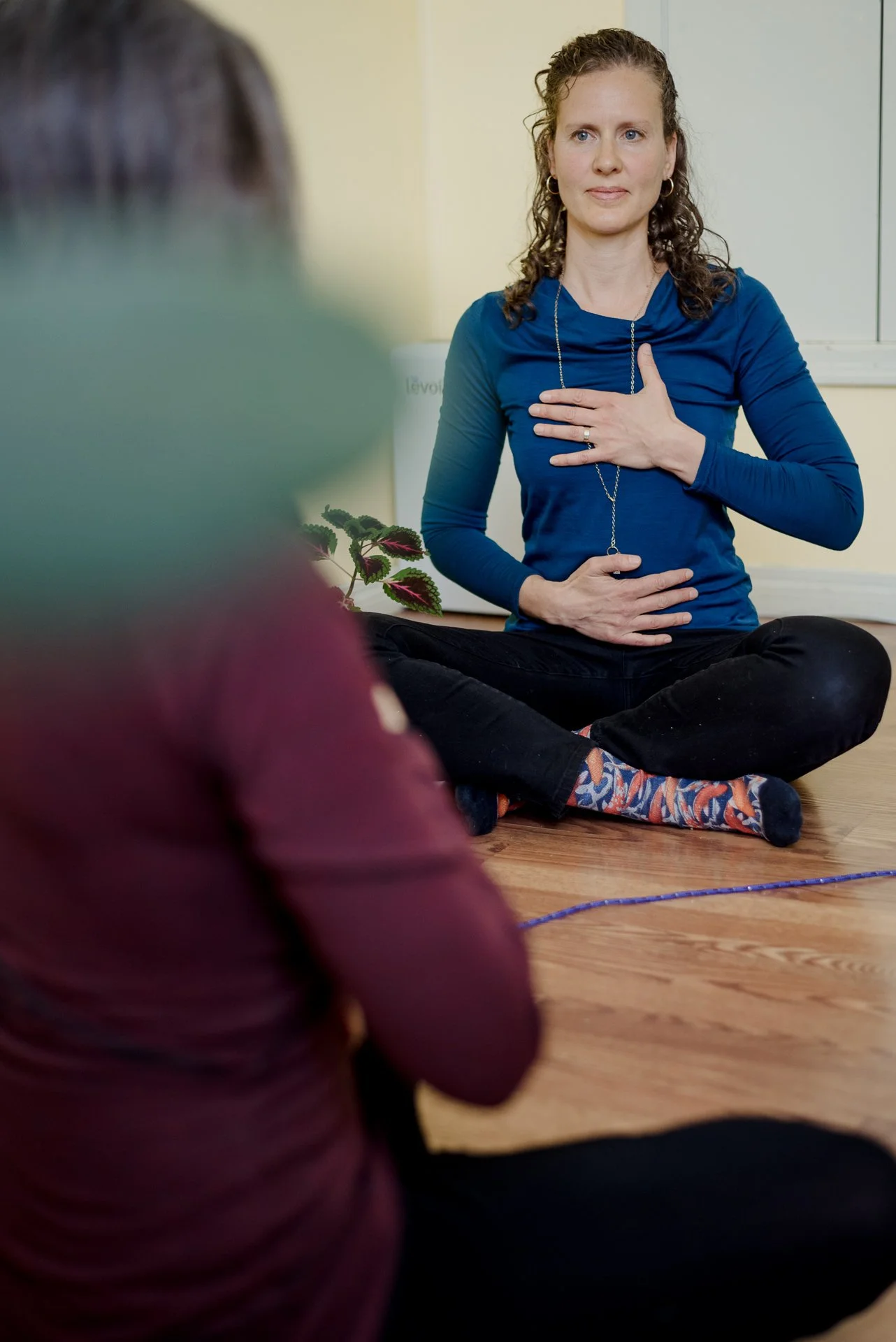
What is Relational Somatic Therapy?
RST is a trauma-informed and client-centred therapy for healing trauma and integrating painful past experiences. This style of therapy emphasizes safety and presence and is non-cathartic. This ensures that the integration of the brain and nervous system happens in a way that is not disruptive to client's lives.
The “goal” of somatic therapy is to feel more grounded, more present, more able to handle life’s challenges and develop more skills to enjoy healthy relationships.
We sit together and bear witness to the information that your body holds. We use present time awareness of the felt sensations in the body to access information about what you need in order to heal.
The symptoms of stress and trauma exist because the body 'thinks' the trauma event is still happening. RST changes how your body and nervous system holds the past. When your nervous system releases tension, your physical, emotional, mental and psychological symptoms can disappear, leaving you ready to live your best life.
Clients become empowered, resilient and connected.
RST addresses a wide range of issues, including
Trauma therapy for gender-based violence, domestic violence, and sexual trauma healing.
Adverse childhood experiences, developmental trauma
Chronic pain and grief counselling.
Anxiety, depression, and panic.
Effects from a traumatic birthing experience.
Insomnia related to traumatic events
Fibromyalgia, chronic fatigue, IBS, and migraines.
Relational struggles like unhealthy relationships, narcissistic abuse, and parenting struggles.
This therapy is leading edge, incorporating the newest research regarding
Neuroplasticity (how the brain changes)
Interpersonal neurobiology (how our relationships affect us and our nervous systems)
Body-centred trauma resolution
Polyvagal theory
Attachment theory
RST is proven to help when you are experiencing
Symptoms of Post-Traumatic Stress Disorder
Anxiety/Depression
Feeling Stuck
Relationship Difficulties
A Desire to Live a More Authentic and Vibrant Life
Effects from a Traumatic Birthing Experiencing
Insomnia Related to Traumatic Events
Frustration in Your Parenting Role
Sexualized violence
Demonstrating with a diagram of poly-vagal theory.
Bessel Van der Kolk
"The research has proven that for resolving symptoms of trauma, somatic (body-based) work is what is needed."
J.Mariah Moser, M.A.
"We cannot change the past, but we can change how the body holds the past”

What to expect during an RST session?
Typically 60-75 minutes, a relational somatic therapy session will unfold a little differently for each client, based on the client’s self-identified intention and needs. Whether you come in with a clear focus or discover your intentions as we talk, your session will be guided by what feels most important to you.
Working with the difficulty
We sit together with the parts of your experience that are stuck, difficult and contain trauma responses. Together, we verbally track the sensations, gestures and images that arise when you speak of this event/experience/memory.
Integration
As each person has a different path through to integration, sessions will look quite different from each other from this point forward. We will discover together what is needed for you to feel resolution.
End of the session
There is time to talk about how you found your session, what you may want to learn or work on, and how I can be most useful to you during your next session.
Check in
Sit down together, talk a little bit, identify an area of focus for the session. Some clients know what they want to work with, while some clients discover that in the first 10-15 minutes of the session.
Grounding in the resource
We typically spend some time noticing what helps you feel more like yourself, or “resourced”. Noticing and taking in our resources (the things externally or internally that give us strength) is an important part of healing trauma.





